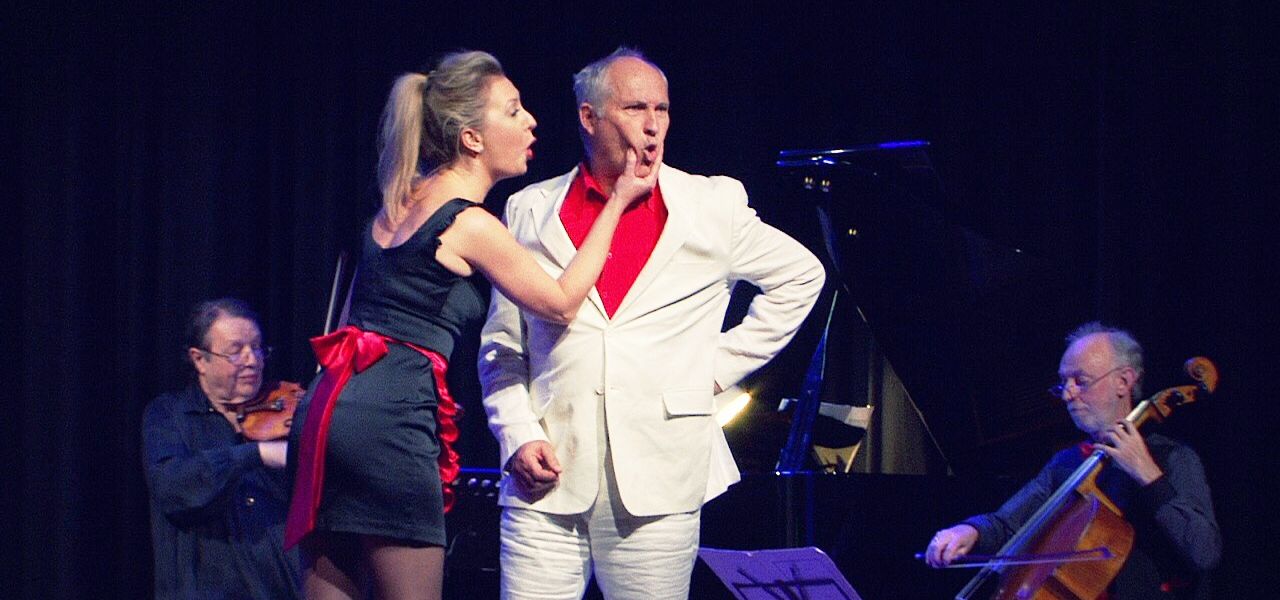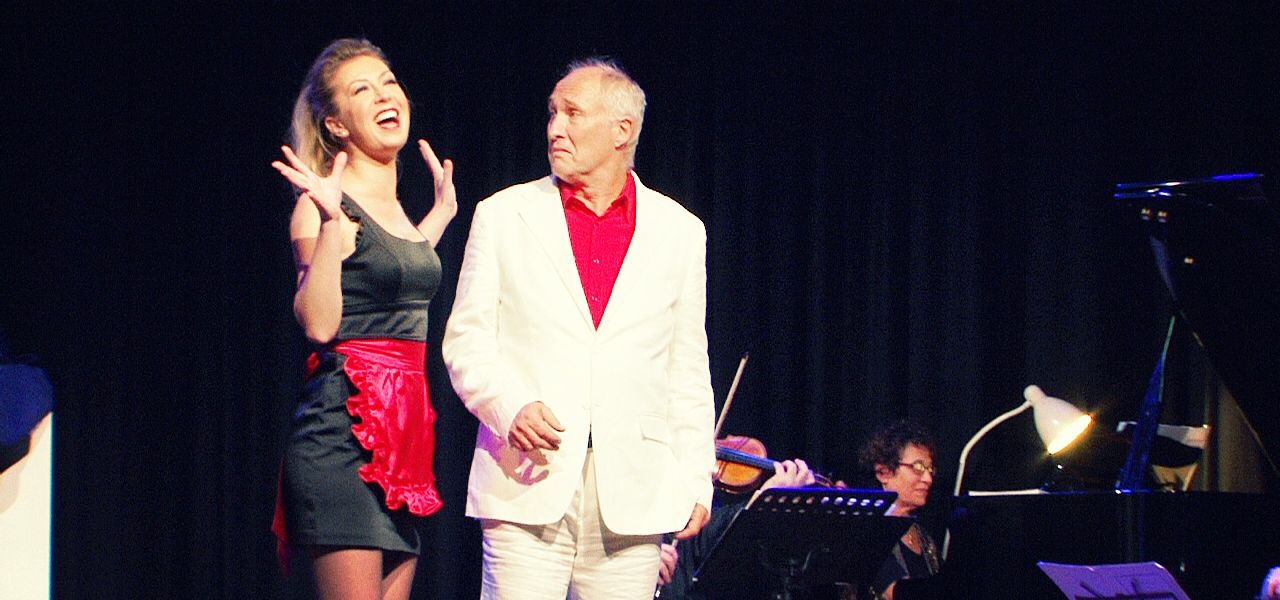This opera is a short comedy of two characters, the wily maidservant, willing to become the mistress of the house, thinks up a plan in order to convince her master to marry her. Uberto, an elderly bachelor, is angry and impatient with his maidservant Serpina, because she has not brought him his chocolate. Serpina has become so arrogant she thinks she is the mistress of the household. When Uberto calls for his hat, wig and coat, Serpina forbids him leaving the house, adding that from then on he will have to obey her orders. Uberto orders Vespone (his male servant) to find him a woman to marry so he can rid himself of Serpina. Serpina convinces Vespone to trick Uberto into marrying her. She informs Uberto she is to marry a military man Tempesta. Vespone, disguised as Tempesta, arrives and without saying a word, demands 4,000 crowns for a dowry. Uberto refuses to pay such a sum. Tempesta threatens him to pay or marry the girl himself. Uberto agrees to marry Serpina. Serpina and Vespone reveal their trick; but Uberto realizes that he has loved her all along. They will marry and Serpina will be the true mistress of the household.
- Venue Format
- Theatre, Hall
- Technical Rating
- Touring Party
- 6
- Considerations
The production: As the theme of the opera is timeless we decided to move it to a more “contemporary” stage and present the performance with modern instruments and costumes. The opera is sung in English in order to make the text approachable to Australian audiences and is directed by Sharyn Henry. The duration of the opera can vary from 1 hour to 90 minutes depending of the style of performance required.
I am a classically trained soprano, singing leading roles in the genre of opera and operetta. I was born in the Hungarian city Miskolc, gradueted at the world famous Liszt Academy of Music, regularly perform at solo and chamber concerts, festivals, oratories and operas in Europe including Hungary, Italy, Austria, Germany, Czech, Poland, Slovakia and the UK as well as Japan and Australia. Now I am based in Brisbane. I would like to -engage with new and established audiences for opera by exploring and pushing the boundaries of the art form. -emphasise the link between human experience and opera, uncovering the theatrical moment that speaks to the human condition. -transform the world of the audience by examining the relationship between the architecture of space and the architecture of opera. -showcase infrequently heard works from the operatic repertoire. -celebrate the relationship between different artforms and the language and techniques used to express them. -explore the process that leads to the commissioning, development and performance of new work. -enhance and diversify the skills of artists in a collaborative laboratory that draws upon diverse cultural practice. -explore the opportunities presented by new technology
- Company Website
- juditmolnar.com
Unique Selling Point
"La serva padrona", one of the great examples of the Italian comic opera. Eighteenth century critics, as well as ordinary listeners, admired the opera's brilliant characterization and masterful plot development. Admired in the eighteenth century, this concise stage work, which possesses a timeless charm, has been appreciated by generations of listeners. This tale of two archetypal characters, the cunning maid Serpina and her aging master Uberto, has been very palatable to audiences around the world for almost 300 years.
Marketing Materials
Brochure Video trailer Musicians of the company gives students and members of the public the unique opportunity to learn from some of Australia's finest chamber musicians. Masterclasses avalaible in singing -Judit Molnar and Mark Jowett-, in violin -Spiros Rantos-, in piano -Brachi Tilles-, in cello-Gwyn Roberts.
Community Engagement
We hope that our participation would give an opportunity to audiences of all ages to listen to “live” opera and chamber music and trigger some stimulation , at least at a part of the audience, to their strengthened desire to perform as well. Pergolesi's "La serva padrona" is a perfect first step into the magical world of the baroque opera. The principal legacy of Baroque music is, of course, the music itself. This is a legacy which is best understood, best appreciated, by simply being played and heard. For over two centuries, most Baroque music remained unplayed, perhaps because concert halls had become too large for what is essentially chamber music, perhaps because the instruments and playing techniques had been supplanted by those then newer than Baroque, perhaps because the music itself failed to communicate as directly and naturally as Classical, Romantic and late Romantic music. Today's recording technology, joined with the recent rebirth of the instruments and performance techniques of the Baroque, give this music a second life, a new vitality. We are fortunate to live in a time when such an important cultural heritage can again be revived, when we can again hear the music of the Baroque.







Comments/Reviews
Limelightmagazin
Media Review
Brisbane's Music By The Sea 2014 Concert Series Presents Opera Buffa - La Serva Padrona by G. B. Pergolesi on the first Saturday in August. - See more at: http://www.limelightmagazine.com.au/events/music-sea-presents-opera-buffa-la-serva-padrona#sthash.5u0TTUFz.dpuf (Read More)
Eventful
Media Review
Music By The Sea is presenting a contemporary opera buffa (comic), La Serva Padrona (The Servant Turned Mistress), by Giovanni Battista Pergolesi. (Read More)
Brisbane News
Media Review
The fresh face of Brisbane opera has come a long way (Read More)